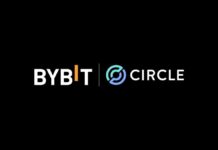
It’s great (and lucrative) to be an early Bitcoin adopter, but few were wise enough to grab that chance right from the start. Most investors turned their heads to crypto market too late to get the first cryptocurrency or major altcoins low-priced. But while you can’t become an early Bitcoin or Ethereum investor in 2018, it’s still possible to make the right bet on crypto’s next big thing, especially since 2017 was a boom year for the market. Many call it a crypto bubble and they may be generally right, but it’s better to take things one at a time. Some of the cryptocurrencies that emerged in the last year or so turned out to be pretty useless, but there definitely were promising projects and coins as well. Let’s take a look at some of them.
Cardano (ADA)
The “Ethereum of Japan” can become a real competitor to actual Ethereum by deploying a next-generation blockchain environment with an improved scalability and advanced proof-of-stake algorithm called Ouroboros.
The pros:
– the first blockchain protocol developed by a global network of scientists and researchers, using the peer review process;
– founded by Charles Hoskinson, former co-founder of Ethereum and BitShares;
– a few months were enough for Cardano to break into the top 10 cryptocurrencies; it has 6th largest market cap among them now.
Omise GO (OMG)
An Ethereum-based open payment platform and decentralized exchange across both crypto and fiat currencies.
The pros:
– backing from co-founders of Ethereum Vitalik Buterin and Gavin Wood;
– support from both crypto and VC investors;
– one the first Ethereum projects to pass a $1 billion market cap;
– 54.71x price increase since June 2017 (as of this writing).
Qtum (QTUM)
Qtum is a hybrid blockchain application platform, combining Bitcoin’s UTXO transaction model and Ethereum’s ability to execute smart contracts. QTUM is the native token of the platform.
The pros:
– “The mix of the best parts of Bitcoin and Ethereum” sounds intriguing;
– Qtum has a well-thought-out strategy, focusing on business adoption and mobile platforms;
– the sweeping 100x price increase made QTUM the 18th largest cryptocurrency by market capitalization (as of this writing).
Basic Attention Token (BAT)
Combining Brave browser and Basic Attention Token, the BAT’s team introduces blockchain-based digital advertising system for users, advertisers, and publishers, with no middlemen needed. The browser privately monitors user attention to reward publishers accordingly. BATs are used for those payments, as well as for obtaining various services on the platform.
The pros:
– an already working product;
– BAT’s CEO, Brendan Eich, is the creator of JavaScript and co-founder of Mozilla & Firefox;
– the project is attractive to all the parties concerned, as it offers crypto rewards to both publishers and users, while advertisers get better targeting and reduced fraud.
0x (ZRX)
Creating a decentralized cryptocurrency exchange, 0x project hopes to overcome security issues of current major exchanges.
The pros:
– decentralized exchange framework is in high demand due to frequent attacks on the biggest centralized crypto exchanges;
– ZRX has already been added to notable exchanges, like Bittrex and Upbit;
– as of this writing, the coin has already given 24,18x return, but the potential market cap is still huge to make use of.
TRON (TRX)
Tronix, the official cryptocurrency of TRON’s blockchain-based entertainment content sharing platform, has already managed to enter the top 10 cryptocurrencies list and then drop out of it, suffering a really heavy price dip. Someone may consider it a warning sign, but others can take it as a chance to buy one of the most promising coins at a lower price.
The pros:
– despite the price dip, TRON still holds 15th position on CoinMarketCap;
– the Tron Dogs game launch may appear to be a good tactic to get people to buy TRX, if the game is to repeat the CryptoKitties’ success;
– the coin’s value is going to be spurred by the TRON’s first beta version launch, planned for March 31.
DMarket (DMC)
DMarket is a decentralized marketplace aiming to create a brand-new sector of the global economy by turning virtual in-game items into real assets that can be traded like any other kind of consumer goods. DMarket Coin will function as the only currency on the platform.
The pros:
– an experienced team with a strong background in video game industry, including the success of Skins.Cash trade platform;
– agreements with several notable game companies that are ready to connect their games to the marketplace;
– the demo version has been functioning for a few months, while the full launch is planned for Q1 2018;
– DMarket Founder’s Marks – memorable tokens limited to 1,000 items – are already being traded on the platform, with the price going up from a few cents to hundreds of dollars.
Civic (CVC)
The “secure identity platform” encrypts your identifying information and inserts it into the public blockchain. The hashed data can be used to confirm your identity but doesn’t disclose your personal information. It’s a safe way to authenticate to third-party services via QR code, without signing up and signing in. The Civic coin offers companies (primarily banks) a cheaper way to buy the Civic authentication service when compared to the fiat money purchases.
The pros:
– the use case is not limited to logging in; things like age verification or voter authentication stand in the line;
– the application is already working;
– Civic ID already provides a log in option on wikiHow.
LOCIcoin (LOCI)
Loci’s InnVenn product is intended to become the biggest platform for buying and selling intellectual property by replacing current complicated and expensive patent process with the blockchain-based solution.
The pros:
– an already working application with an active user base;
– the idea of the project has been researched since 2008, and blockchain technology seems to be the perfect choice;
– the product is secured by a patent itself;
– an InnVenn subscription can be bought for $249 or 100 LOCIcoins, which is cheaper and thus attractive.
Coinlancer (CL)
The project uses blockchain to eliminate fraud from online freelancing market and make it more effective and secure.
The pros:
– Coinlancer adresses pressing problems of the current freelance job market, including failed payments, unresolved disputes, or unexplained account suspensions;
– the freelance economy is on the rise, with 43% of U.S. workers predicted to be freelancers by 2020, up from 34% in 2016.
– the road map is not too prolonged, as the main milestones are expected to be reached this year.
The above-mentioned cryptocurrencies have the potential to reach new heights in 2018, but the list is not finite, as the last year was full of promising ICOs. And most importantly, don’t take the thoughts above as a financial advice. Remember that investing in cryptocurrencies is highly risky and speculative and always do your own research.
[newsletter_form lists="1"]










